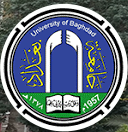Abstract
The study dealt with (CAD) in the Holy Qur’an: its definition, its behavior, its adverbs, and its negation. The study aimed at emphasizing the need to study transcribers in the Holy Qur’an, and applying the functional grammar approach and graduating with it from the wombs of grammar books, to the horizons of application, and the study included: A preface entitled (The Naskh) its types and its work and three sections, the first topic came under the title (Actions of Approach, its Definition, Types and Work). The second topic was entitled (CAD) its definition and behavior, the conditions of its circumstance, and the entry of denial to it. The third topic (cad) came in the Holy Quran. The method followed by this study is the inductive analytical method. In conclusion, the study reached the conclusions of the recommendations, which are: 1. The necessity of applying the functional grammar approach. 2. Inviting researchers to study transcribers, and their types, through the Noble Qur’an and the Noble Hadith.
Article Type
Article
First Page
85
Last Page
104
Publication Date
6-15-2023
Creative Commons License

This work is licensed under a Creative Commons Attribution 4.0 International License.
Recommended Citation
Abdel Hamid, Saeed Mahmoud Musa and al-Imam Ibrahim, Muhammad
(2023)
"Cad in the Holy Quran,"
Alustath Journal for Human and Social Sciences: Vol. 62:
Iss.
2, Article 5.
DOI: 10.36473/ujhss.v62i2.1995
Available at:
https://alustath.researchcommons.org/journal/vol62/iss2/5










